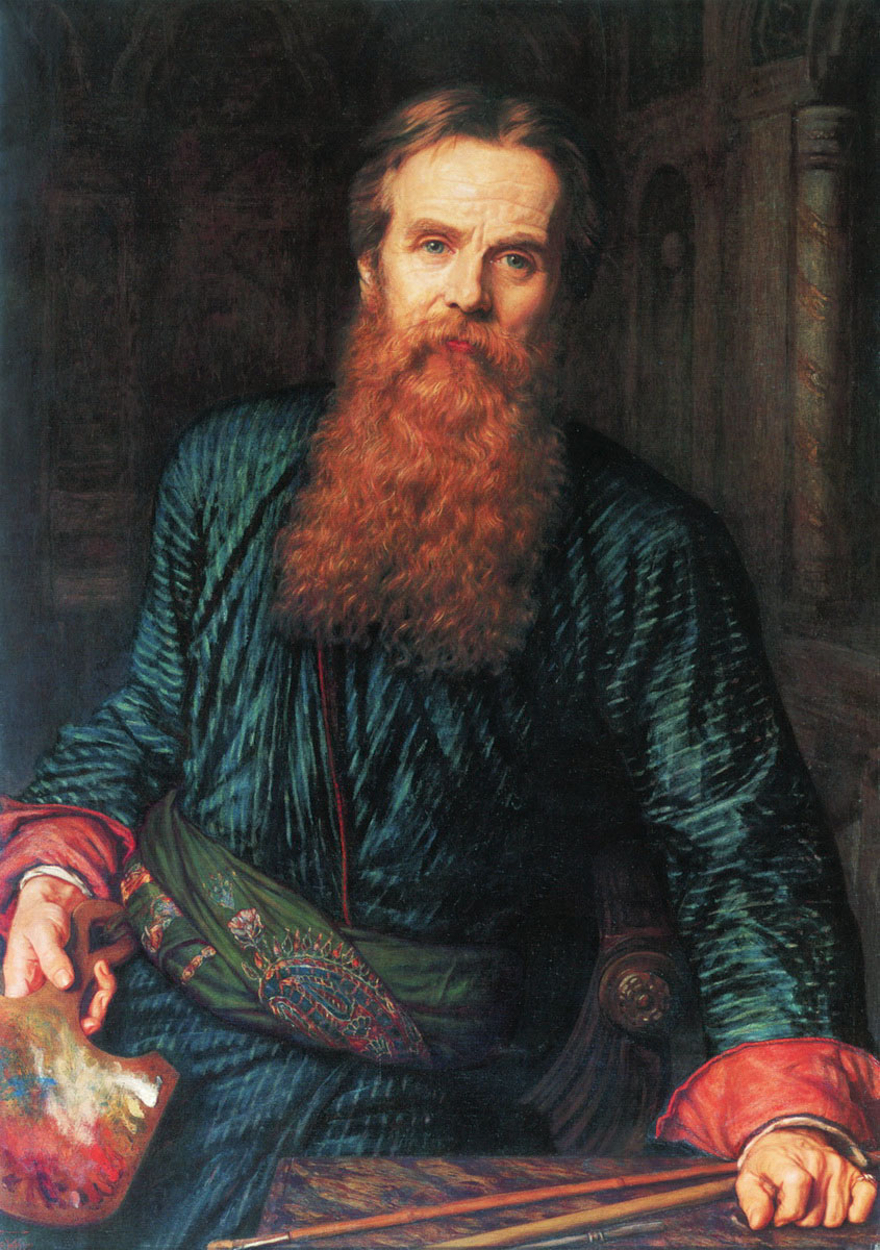This painting depicts a scene from The Lady of Shalott (1833–42), a poem by Alfred, Lord Tennyson. The Lady of Shalott was a character from the legendary world of Camelot. According to Tennyson’s poem, she was confined to a tower and was forbidden from looking directly out the window at Camelot, on threat of being cursed. Instead, she was supposed to look outside only through a mirror and weave a representation of what she saw. When she eventually did look directly outside, she became cursed and later died.
William Holman Hunt (1827–1910) was a founder of the Pre-Raphaelite Brotherhood, among whose followers the Lady of Shalott was a popular subject. (You might be familiar with John William Waterhouse’s more famous painting of her in a boat.) Hunt is well known for brightly colored and highly detailed paintings that are full of symbolism, religion, and morality. His two most popular works are The Awakening Conscience and The Light of the World.
In this painting, Hunt shows us the moment that the Lady of Shalott becomes cursed. It’s a large and truly dynamic work, and it gives a very strong sense of the curse sweeping throughout the room. Though the curse itself is invisible, we can see its effects in her swirling hair and the unravelling strands of her weaving. The setting seems otherworldly, with many detailed wall hangings and circular windows through which we get a glimpse at the forbidden Camelot. In order to create all the tiny details that make this painting so captivating, Hunt worked on it for almost twenty years.
- Alexandra Kiely
P.S. There were not only brothers in the Pre-Raphaelite Brotherhood; read here about Julia Margaret Cameron, the queen of Pre-Raphaelite photography.


 William Holman Hunt
William Holman Hunt